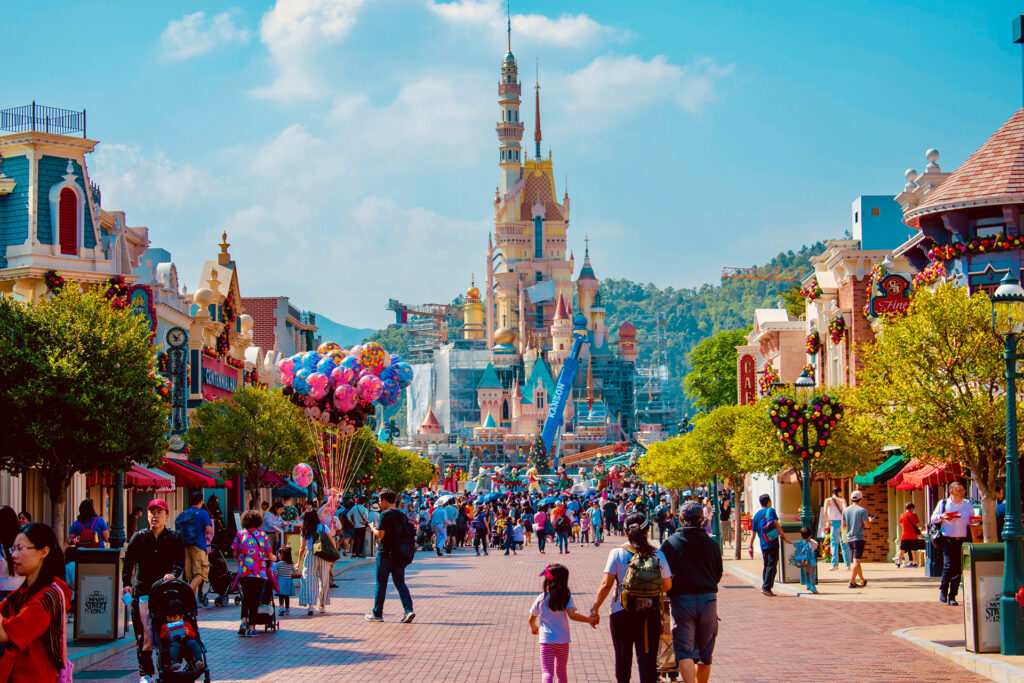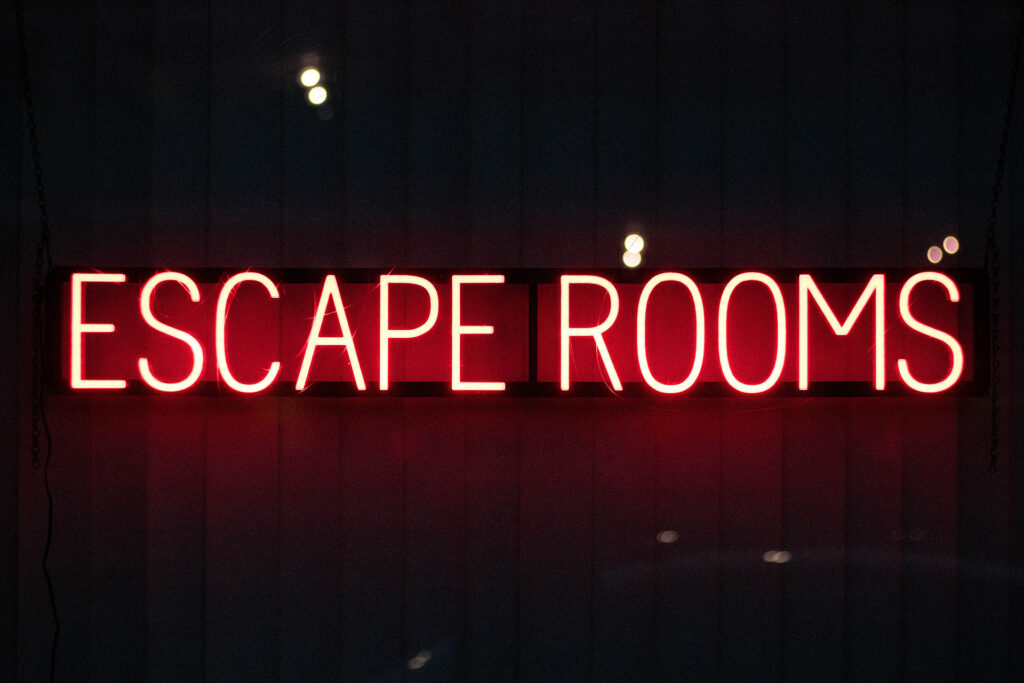Sai Aditya is bringing together a group of people to spearhead new experience development in India. He and his team are currently working on fusing active and passive experiences within a multi-format storyline. He is also an Independent Researcher with the University of Central Florida, researching the Experience Economy in India.
Over the past decade or so, the narrative of the Experience Economy in India has taken shape around what brands and companies mean when they use the term. These companies generally have customer experience (CX) at their core, such as e-commerce. This has led to a narrative where emerging technologies, data and new media have been used as tools to create hassle-free experiences for customers – a narrative that focused only on the digital, service and convenience characteristics of the Experience Economy. This is what The Two Families of The Experience Economy talks about as “experiences in the economy”, or, put simply, as time saved.
However, this doesn’t indicate the absence of the flip side, which talks about time well spent. Until now, this side of the Experience Economy in India has found little or no mention in research literature and media coverage, but that doesn’t mean it doesn’t exist. Here is an overview of some examples of “time well spent” experiences in India.
(TL;DR? Check out the shorter version of this post here.)
An Amusement Park For Everyone

Right from the inception of Appu Ghar, India’s first amusement park, in 1984, Indian families have been turning experientialist by spending more time and money on park experiences to seek thrills, entertainment and quality family time. Pre-pandemic, amusement parks in India were averaging 30 million visitors annually, but parks here vary in terms of access due to location, price point and rides.
For example, parks like EsselWorld and Wonderla, located within 50 kilometers (30 miles) of major cities like Mumbai and Bangalore, attract families and people who come from the city. Their price points are slightly on the higher side when compared to other amusement parks, owing to their city-based audience. Ride variety, restaurants and other amenities are also at a significant high when compared to other parks.
Semi-urban cities and towns, meanwhile, are also hot grounds for amusement parks, although here they are called fairs or melas. With fewer amenities, makeshift rides, eateries and shops, they are smaller than a standard amusement park. Set up temporarily during religious festivals and key events, these fairgrounds turn into social hubs for local dwellers. The visitor base includes people from in and around the place, for whom the rides and energy of the park offer something starkly different from daily life and chores. To experience an amusement park like EsselWorld or Wonderla is not as easy for them as it is for city folks.
Bridging The Gap Through Active Experiences

India has approximately 150 amusement parks for a population of 1.21 billion, while the United States has approximately 400 amusement parks for a population of 330 million. This gap in the supply of entertainment and thrills through amusement park experiences has led to a boom in small-scale active experiences like video game arcades, bowling alleys, indoor sports, children’s play areas, adventure experiences, escape rooms and more recently, VR-based games and experiences.
A case in point is SMAAASH Zone, a gaming and entertainment center that has sports, bowling, video-game arcades and VR experiences under a single roof. It had around 40 outlets in India before it closed operations last September owing to the pandemic. The amusement park being a once-in-a-year experience with family, SMAAASH Zone came as an alternative for something fun and new to do with friends within the city or town. It strategically placed itself as a go-to for teens, sports lovers and thrill-seekers who were bored of the amusement parks they went to as kids. Other forms of experiences like paintball, laser tag, adventure parks and VR-based experiences also caught onto this trend.
Since the 2010s, mall culture has influenced the rise of active experiences more than anything else in India. Shopping malls have always been anchor spaces, community hubs and leisure spots in urban and semi-urban cities. A 2019 study found that only half of shopping mall visitors come to the mall for shopping. By placing Family Entertainment Centers (FECs) – a collection of video-game arcades, bowling alleys, indoor sports and children’s play areas with food, music and movies – within the mall, the experience rises to a whole new level.

The Great India Place mall, located in Noida near the national capital of Delhi, is one such example. As well as containing the usual amenities for movies, food and shopping, it also has an indoor FEC, an amusement park called Worlds of Wonder, a kids edutainment park called Kidzania, a water park and a go-karting facility. This trend is here to stay, with similar projects being developed in other parts of the country – for example Urban Square in Rajasthan, a tourism hotspot.
In India, experiential marketing campaigns have also not stepped outside the shopping mall as a location for the campaign. This makes sense given mall culture in India is still very strong. Reebok, for example, created a pop-up experience where a laser maze challenge was set up in the center of a shopping mall. Visitors had to cross the laser while collecting Reebok tags. Greater the number of tags you collect, the more you stand a chance to win cool goodies from Reebok.
The Coming Of Age Of Passive Experiences

Museums in India are in a state of transition. Integrating VR, AR and other technologies to better the whole experience is a trend catching up in many Indian museums. At the same time, the emergence of new themes and subjects in museums have attracted new audiences. Take for example India’s first interactive music museum, The Indian Musical Experience. Opened in 2019 in Bangalore, this museum explores the evolution of Indian music through interactive, multi-sensory exhibits. You can create your own music with the many instruments available and also witness a live rendition. The whole experience manages to achieve a balance between education and interactivity.
Like the Indian Musical Experience, Trick Art or 3D Art museums have been very influential in getting young audiences to appreciate and value art through their selfie photo experiences. Art galleries have traditionally attracted a very upscale audience, labelling art as “sophisticated” and “only for the rich” in India. This is changing with mega-art events like the Kala Ghoda Arts Festival, the Kochi-Muziris Biennale and Kolkata Arts Lane Festival. Using the power of art installations and other emerging forms, these festivals attract more than half a million visitors each year. Topped with other events around dance, music, theatre, cinema and literature, these festivals provide a wholesome experience to many seeking their first interaction with art.
Trends around immersive theatre and drama are also catching up in India. Immersive theatre company Crow has now staged two immersive-theatre plays, each in a location suited to the storyline. The Darkroom is another play that has experimented with the immersive theatre format.
The Invasion Of All Things Themed

Like many other countries, the idea of theming in India isn’t limited only to amusement park experiences. It can also be found in restaurants, hotels, travel and more.
Parks
Opened in 2016, Bollywood Parks Dubai was the world’s first theme park based on movies from Bollywood – the movie industry most dominant in India. Apart from rides and attractions about movie characters and plots, the theme park also boasts live shows, dance numbers and stunt sequences from Indian movies. Being in Dubai – a world-class tourist destination – it sees a visitor base beyond the many Indians that come to Dubai. On a similar note, Ramoji Film City in India feeds off the movie mania present throughout the country. Here you can witness places and sites famous movies were shot in, akin to studio tours in the United States.

More than any other country in the world, India has seen the rise of religious theme park projects. Taking advantage of the many religious sites and mythological stories India has, these parks are situated where the stories were historically based. The visitors to these parks are people and families who come to visit the religious sites. That way, numbers are fairly constant, with a peak during religious occasions.
The concept of fan parks in many other parts of the world is already well established. But in India, the idea to introduce fan parks took shape because of the need to take the sport of cricket beyond the cities in which the games were already being played. The fan parks idea has really taken off, with audiences increasing and newer locations being added year by year.
Restaurants

Kingdom of Dreams, located in the north of India, is an experience format that many Indians have come to love over the past few years. It clubs live entertainment and dining with a completely themed environment around the many cultures that make up India. Drama and theatre being culturally inaccessible to many Indians, Kingdom of Dreams manages to provide a similar experience adding elements of food, music, and ambiance – a common denominator in many Indian experiences. It has also consistently featured on TripAdvisor’s Travellers’ Choice list for the past few years.
Robot, pirate, jungle, stock exchange and village are just some of the many popular themes that exist around themed restaurants in India. There are around 45 unique themed restaurants in Indian cities currently and new ones are coming up like nothing done before.
PUBG Foodcity is a restaurant that takes on the wild craze around the Indian battle royale game PUBG. With the game very popular among young audiences, the restaurant is the go-to place for friends to soak in the environment they love seeing in the game. Apart from ordering food, customers can also engage in a live PUBG game, with the winner receiving mega discounts on his/her meal.
Theming becoming the new normal, restaurants have picked ideas from other parts of the world, like fly-dining or dining in the sky. Currently in multiple locations around India, the idea of having dinner 150 feet above the ground is gaining a lot of traction.
Although not wholly experiential, the way event marketing has progressed over the years bodes well for experience creators wishing to operate in this space. The best example until now would be that of Zomato – a restaurant aggregator and food delivery company. It set up an event called Zomaland – a food and entertainment carnival. Apart from the wide variety of cuisines on offer, there were games, concerts, stand-up comedy shows, fun rides, and yes, music and ambiance. All in all, a fun experience with photo ops being added on purpose to make it Instagrammable. Until the pandemic, they ran the event in more than 10 cities around India. Another example of this kind of promotion in India is Bacardi’s NH7 Weekender.
Small-scale experiences

Mystery Rooms. The Hidden Hour. Breakout. These are some of the many escape-room companies that have physical locations all around India. An average escape room experience in India is around 60 minutes and is considered a thing to do with friends and family. While not all the theming in all escape rooms is up to the mark, it manages to attract first-time visitors who are excited by what the experience has to offer. As a result of the pandemic, many of them have pivoted online, while adding new storylines better suited for a virtual escape room.
Small-scale themed experiences are on the rise in India. Delta 105 – an army camp experience – and Feel the Jail – a themed experience around spending 24 hours in prison – are some notable examples in the edutainment space. While these are not mainstream experiences, they are catching on through word of mouth and social media mentions.
Travel

Themed travel is not too far behind. Beach Box Hotel in Goa is themed around sea containers. Hotel Le Sutra in Mumbai is themed around an Indian mythological character called Ravana. A notable example of themed travel in India would be the promotion strategy used by the 2016 Disney movie The Jungle Book. Since the story is based around a national park in Pench, Central India, leading travel company Taj Safari partnered with relevant organizations to create The Jungle Book Safari. This was an experience for movie and wildlife fans alike to immerse themselves in a natural jungle, this time with the help of a storyline.
Immersive And IRL Socializing
While immersive socializing is yet to take off in India, baby steps have been made in the digital world. Hikeland is India’s first on-smartphone virtual world where you can chat and hang out with friends over movies and games. Currently limited only to a home and a movie screen in the virtual world, there are planes to expand and create a world that mimics the real world. This debuted right when the pandemic began.
Meanwhile Lahe Lahe, a creative personal expression space in Bangalore, is a new experience format where a volunteer can book a day and time to perform an act, teach a lesson, give a talk, present an idea, conduct a workshop, or any other act of personal expression. This is then posted as an event with tickets sold to come and watch the act. The same location also functions as a co-working space for entrepreneurs during the day.
New experience development is a function of the social, cultural, emotional, historical and educational contexts of a place and its people. Despite being a country very rich in culture and stories, not much has been done to use these storytelling contexts in experiences in the same way that movies, video games and books have benefited from them. Therefore India has immense opportunities for new experiences. Topping these experiences with trends like live-action role-playing (LARPing), immersive arts and gamification will only add to the magic.
India has two parts to it – a part that is extremely progressive and liberal, and a part that is traditional and very culturally rooted. Consequently, both of these parts consume experiences of a different kind. Creating different experiences for the many audiences that make up India will be an interesting puzzle to solve for an experience creator.
To get more insights from experts in the experience economy like Sai – and to be the first to know about our membership programme, events and more – sign up to the WXO community here.





